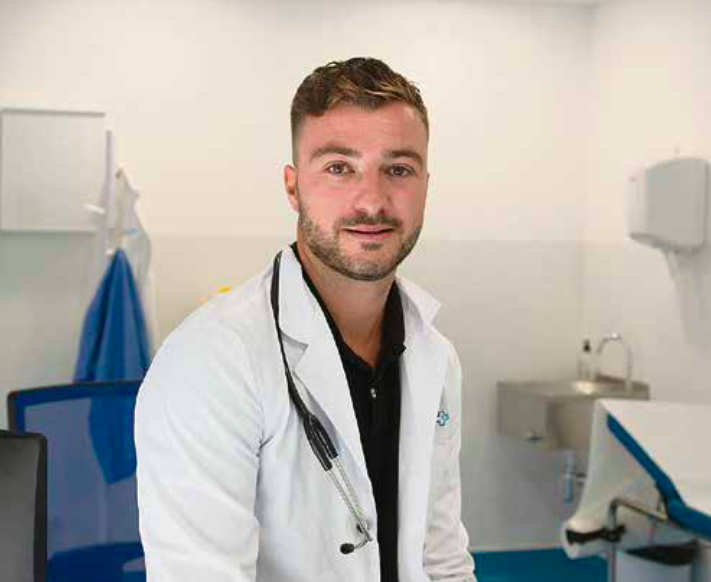

INTELLAN

Ask a doctor about a prescription for INTELLAN

How to use INTELLAN
INSTRUCTIONS for medical use of the medicinal product Balance 4.25% glucose 1.25 mmol/l calcium
You are a professional web developer in the field of pharmaceutical documentation.
Content for conversion:
INSTRUCTIONS for medical use of the medicinal product Balance 4.25% glucose 1.25 mmol/l calcium
Balance 4.25% glucose 1.25 mmol/l calcium
Composition:
active substances: calcium chloride dihydrate; sodium chloride; sodium (S)-lactate solution (sodium (S)-lactate); magnesium chloride hexahydrate; glucose monohydrate (anhydrous glucose).
Description:
"Balance 4.25% glucose 1.25 mmol/l calcium" is supplied in a two-chamber bag. One chamber contains an alkaline lactate solution, and the other chamber contains an electrolyte solution based on glucose. Mixing of the solutions of both chambers occurs by opening the middle seam between the two chambers, resulting in the formation of a neutral ready-to-use solution.
Before mixing:
1 liter of acidic electrolyte solution based on glucose contains:
| Calcium chloride dihydrate | 0.3675 g |
| Sodium chloride | 11.279 g |
| Magnesium chloride hexahydrate | 0.2033 g |
| Glucose monohydrate (anhydrous glucose) | 93.5 g (85.0 g) |
1 liter of alkaline lactate solution contains: sodium (S)-lactate solution 15.69 g (sodium (S)-lactate 7.85 g)
After mixing:
1 liter of neutral, ready-to-use solution contains:
| Calcium chloride dihydrate | 0.1838 g |
| Sodium chloride | 5.640 g |
| Sodium (S)-lactate solution (sodium (S)-lactate) | 7.85 g (3.925 g) |
| Magnesium chloride hexahydrate | 0.1017 g |
| Glucose monohydrate (anhydrous glucose) | 46.75 g (42.5 g) |
ions:
| Ca2+ | 1.25 mmol |
| Na+ | 134 mmol |
| Mg2+ | 0.5 mmol |
| Cl- | 100.5 mmol |
| (S)-lactate | 35 mmol |
| Glucose | 235.8 mmol |
Excipients:
water for injection, hydrochloric acid, sodium hydroxide, sodium bicarbonate.
Pharmaceutical form.
Solution for peritoneal dialysis.
Main physical and chemical properties:
A two-chamber bag containing a clear colorless aqueous solution.
Ready-to-use solution:
| Theoretical osmolality | 509 mOsm/l |
| pH ≈ | 7.0 |
Pharmacotherapeutic group.
Solution for peritoneal dialysis. Hypertonic solutions.
ATC code V05D B.
Pharmacological properties.
Pharmacodynamics.
"Balance 4.25% glucose 1.25 mmol/l calcium" is an electrolyte solution containing glucose and lactate buffer, intended for intraperitoneal use in the treatment of terminal stage renal failure of various genesis using continuous ambulatory peritoneal dialysis (CAPD).
Pharmacokinetics.
Uremic products (such as urea, creatinine, and uric acid), inorganic phosphates, and electrolytes such as sodium, potassium, calcium, and magnesium are removed from the body into the dialysis solution by diffusion and convection.
Non-clinical data on safety.
Non-clinical studies on the toxicity of the "Balance 4.25% glucose 1.25 mmol/l calcium" solution were not conducted.
Clinical characteristics.
Indications.
Terminal (decompensated) stage of chronic renal failure of various origins, subject to treatment with peritoneal dialysis.
Contraindications.
The "Balance 4.25% glucose 1.25 mmol/l calcium" solution should not be used in patients with lactic acidosis, severe hypokalemia, severe hypocalcemia, hypovolemia, and arterial hypotension.
Special precautions for use.
Before using the "Balance 4.25% glucose 1.25 mmol/l calcium" solution for peritoneal dialysis, it is necessary to familiarize yourself with the instructions for medical use.
Interaction with other medicinal products and other types of interactions.
The use of this solution for peritoneal dialysis may lead to a decrease in the effectiveness of other medicinal products, as they may penetrate into the dialysate and be excreted from the body together with it.
Special features of use.
The solution for peritoneal dialysis should not be administered intravenously.
Method of administration and dosage.
This solution is intended exclusively for intraperitoneal use.
Continuous ambulatory peritoneal dialysis (CAPD):
Adults: If there are no other prescriptions, the patient is prescribed 2000 ml of solution per exchange, four times a day.
Automated peritoneal dialysis (APD):
If an apparatus (slip-safe cyclator) is used for intermittent or continuous cyclic peritoneal dialysis, it is recommended to use bags of a larger volume, which allows for more than one exchange of the solution.
Handling (operation method)
The ready-to-use solution should be used immediately.
"Stay-safe" system for continuous ambulatory peritoneal dialysis (CAPD)
The bag with the solution is preheated to body temperature.
"Slip-safe" system for automated peritoneal dialysis (APD)
To start the treatment procedure, it is necessary to insert the slip-safe system connectors with the prescribed solution into the free ports of the cyclator tray.
Adverse reactions.
"Balance 4.25% glucose 1.25 mmol/l calcium" is an electrolyte solution, the composition of which is similar to that of blood.
Potential adverse reactions associated with the peritoneal dialysis solution
Endocrine system disorders: secondary hyperparathyroidism with possible bone metabolism disorders (unknown).
Potential adverse reactions of peritoneal dialysis as a method
Infections and invasions: peritonitis (very common), indicated by clouding of the dialysate being drained.
Shelf life.
The shelf life in the original packaging for sale is 2 years.
Storage conditions.
Store at a temperature not below 4 °C.
Incompatibility.
The medicinal product should be used only as prescribed by a doctor to avoid the risks of incompatibility and contamination.
Packaging.
2000 ml or 2500 ml in a two-chamber bag "stay-safe" system; 4 bags in a cardboard box with a sticker in Ukrainian or with labeling in Ukrainian and other languages;
Release category.
By prescription.
Manufacturer.
Fresenius Medical Care Deutschland GmbH.
Location of the manufacturer and address of the place of its activities.
Frankfurter Strasse 6-8, 66606 St. Wendel, Germany.
Applicant.
Fresenius Medical Care Deutschland GmbH.
Location of the applicant.
Else-Kroener-Strasse 1, 61352 Bad Homburg v.d.H., Germany.
- Country of registration
- Prescription requiredNo
- Manufacturer
- This information is for reference only and does not constitute medical advice. Always consult a licensed doctor before taking any medication. Oladoctor is not responsible for medical decisions based on this content.
- Alternatives to INTELLANDosage form: tablets, 50 mgActive substance: riluzoleManufacturer: Публічне акціонерне товариство "Науково-виробничий центр "Борщагівський хіміко-фармацевтичний заводPrescription requiredDosage form: solution, 1.5 mg/ml in 20 ml ampoulesActive substance: edaravoneManufacturer: ТОВ "Юрія-ФармPrescription requiredDosage form: solution, 1.5 mg/ml in 20 ml ampouleActive substance: edaravoneManufacturer: АТ "ФармакPrescription required
Alternatives to INTELLAN in other countries
The best alternatives with the same active ingredient and therapeutic effect.
Alternative to INTELLAN in Spain
Online doctors for INTELLAN
Discuss dosage, side effects, interactions, contraindications, and prescription renewal for INTELLAN – subject to medical assessment and local rules.














